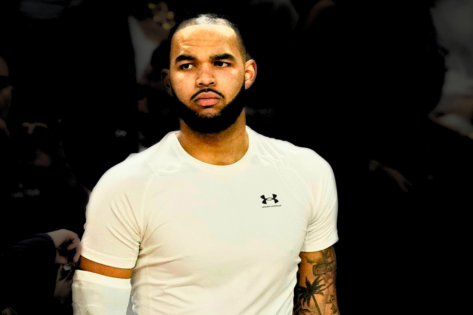Diego Pavia had a last smile and wanted to have huge celebrations. The court ruling handed him an extra year of eligibility. A college football star argued that the eligibility criteria by the NCAA unfairly limited his ability to compete for NIL opportunities. And even potential future NFL prospects. But was it a win for Diego Pavia only, or other college athletes as well? His extended eligibility opened the door for athletes across the NCAA sports, including basketball, particularly those limiting eligibility for junior college players. Yes, it’s happening, and the ruling is shaping up fast.
Pavia played two seasons of junior college at New Mexico State and New Mexico Military Institute and three seasons of Division I football (one of those being the COVID redshirt season). And now, because of the court ruling, he will receive a sixth season of NCAA eligibility. Has the NCAA taken note of this? It certainly has, and to avoid any future such occurrences, a special note was issued to all the schools.
The NCAA memo read, “The NCAA Division I Board of Directors granted a waiver to permit student-athletes who attended and competed at a non-NCAA school for one or more years to remain eligible and compete in 2025-26. If those student-athletes would have otherwise used their final season of competition during the 2024-25 academic year, and meet all other eligibility requirements (e.g., progress toward degree, five-year period of eligibility).”
NCAA, College League, USA Basketball: Oklahoma at Baylor Feb 13, 2024 Waco, Texas, USA Baylor Bears head coach Scott Drew huddles with his team during a break in play against the Oklahoma Sooners during the second half at Paul and Alejandra Foster Pavilion. Waco Paul and Alejandra Foster Pavilion Texas USA, EDITORIAL USE ONLY PUBLICATIONxINxGERxSUIxAUTxONLY Copyright: xChrisxJonesx 20240213_neb_qr0_407
This could be massive for students looking to develop and make their mark in college period. Before the rule consideration, athletes had four seasons of eligibility within a five-year window. Now temporary NCAA eligibility rule, termed as an eligibility waiver, will allow them to participate for five seasons. But there has to be an asterisk. Yes, there is. First, we will go through the new rule and then check on the pre-requirements for the eligibility criteria and also how it will affect athletes.
Possible output of the new NCAA eligibility rule, process and expected date
College athletes’ eligibility window till now is four seasons, regardless of the division, as mentioned earlier. The consideration of the rule now has allowed another year of eligibility for those who attended non-NCAA institutions and whose eligibility is supposed to finish in the 2024-2025 academic year.
The process for application process is also made simpler with players applying through the team coaches. The HC’s will have to fill in the application through their university’s compliance office. And if coaches don’t align with the athlete’s request, as of now, athletes may need to find another university willing to support.
Currently, many athletes are enjoying an extended season brought in by the COVID-19 pandemic. This extension has also added one more year to their academic calendar, and also the eligibility for the draft. The new proposed rule is only applicable to the athletes from JUCO or NAIA universities.
The NCAA for time has approved the extension early in January 2025. But the notifications are awaiting a final hearing on the appeal of the ruling in Pavia’s case. The one more stumbling block in the implementation of the NIL deal saga. The topic is on plates for days and actually triggered the new rule extension rule altogether. With the House settlement still in process, the NCAA leaders are aiming to reshape the organisation’s role. The said date for the effect is by July 1, provided the settlement is approved. Schools themselves have until June 15 to give their answers on the NIL matter first.
Pre-requirements for the eligibility extension
As for April 2025, the athletes eligible for the extension must have competed at a JUCO or non-NCAA institution. They will also be set to exhaust their NCAA eligibility after the 2024-25 season. The athletes should still meet the academic progress benchmark, and their additional eligibility must fit within the NCAA’s five-year clock.
What could be the Implications of the Eligibility Extension
To every action, there would be a reaction. The eligibility extension will also have a few positive and negative effects on the athletes. For the eligible athletes, it’s all good. An extended college career means more time for athletes to build on their development and also a brand to capitalise on – either in NIL or for the pro leagues. They could also extend their education with advanced studies, opening new job opportunities for them.
But for teams and high schoolers? It’s tricky. Coaches at smaller schools worry Power Five programs will snap up waiver-eligible veterans or super-seniors, leaving mid-majors in the dust. High school recruits might also wait longer for scholarships, with rosters packed with returning players. Some critics even question if this stretches the ‘student’ part of student-athlete too thin, though the NCAA insists academic standards—like GPA and degree progress—still hold firm.
About 2,000 athletes, mostly in football and basketball, could benefit from this eligibility waiver in 2025–26, based on NCAA estimates. But with the House v. NCAA settlement still hanging in the balance, the NCAA’s playing it safe—treating this as a trial run before deciding on any broader policy shifts.
The post Fact Check: Is NCAA Extending the Years of Eligibility for Players? When Will It Come Into Effect? appeared first on EssentiallySports.
